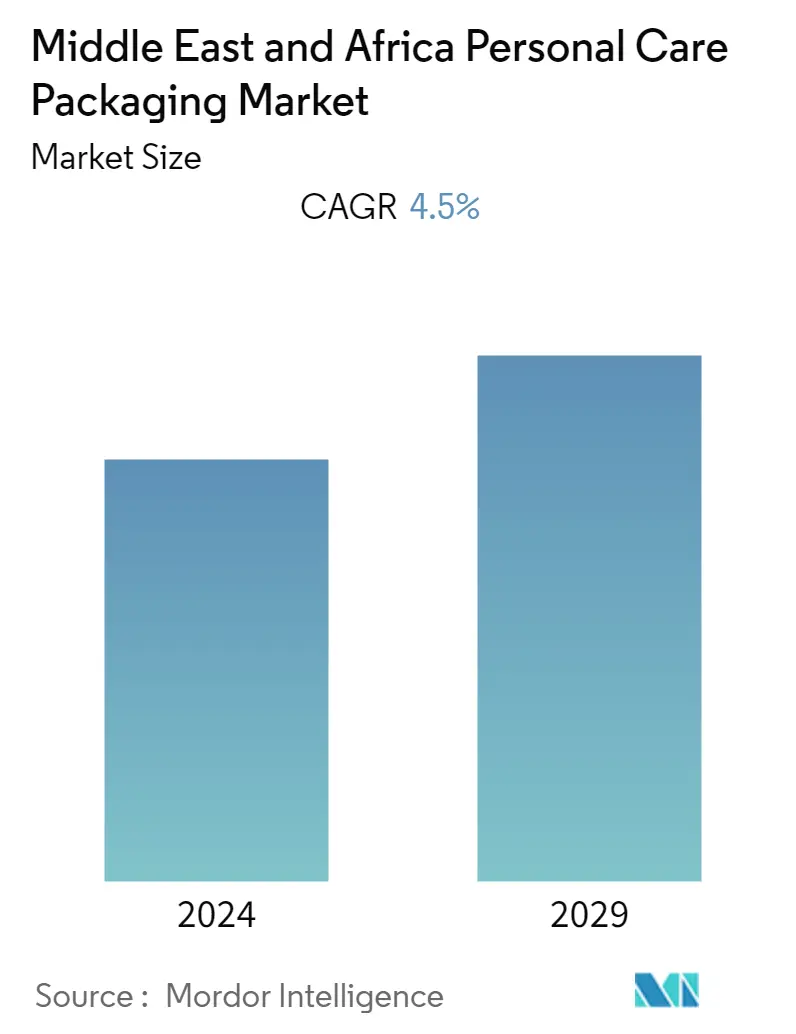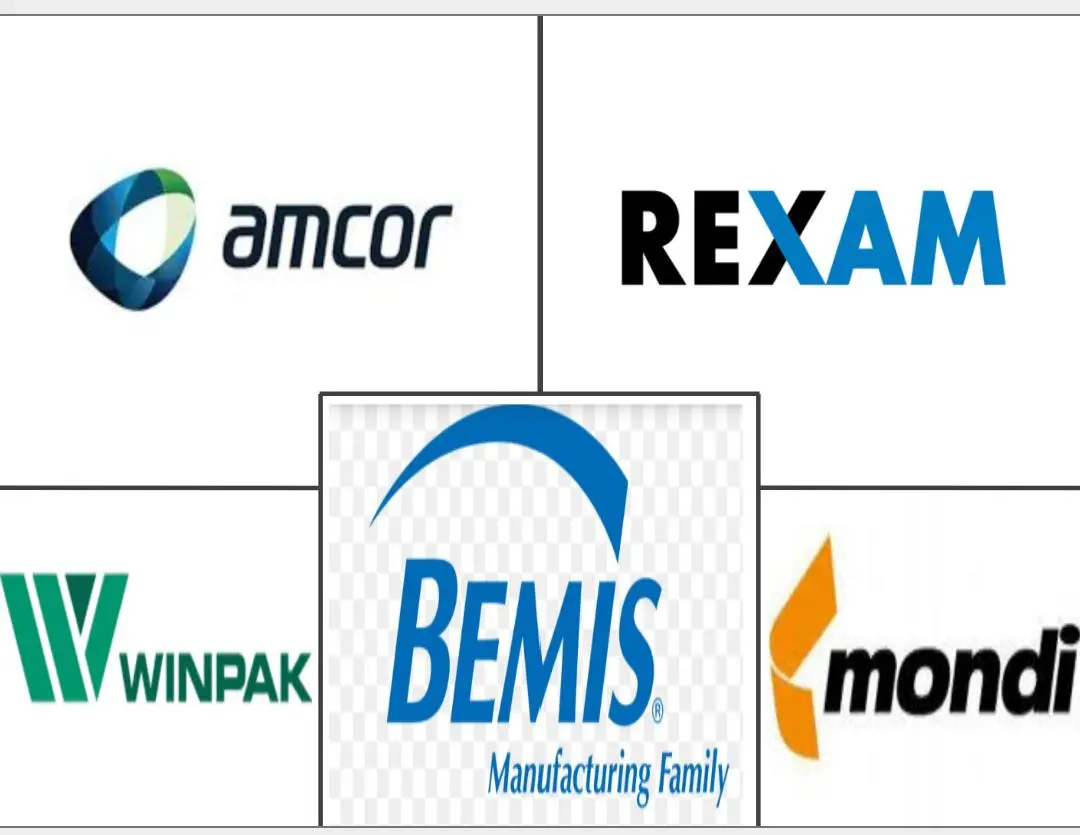Market Size of Middle East and Africa Personal Care Packaging Industry

| Study Period | 2019 - 2029 |
| Base Year For Estimation | 2023 |
| Forecast Data Period | 2024 - 2029 |
| Historical Data Period | 2019 - 2022 |
| CAGR | 4.50 % |
| Market Concentration | Medium |
Major Players
*Disclaimer: Major Players sorted in no particular order |
Need a report that reflects how COVID-19 has impacted this market and its growth?
MEA Personal Care Packaging Market Analysis
The Middle East and Africa Personal Care Packaging Market is expecetd to register a CAGR of 4.5% during the forecast period (2021-2026). Factors like changing consumer lifestyle, increasing importance of packaging, rapid urbanization, and advancing packaging technology are aiding the growth of the personal care packaging market.
- An increased focus on natural skincare treatments, non-invasive beauty procedures, and the growing influence of beauty and lifestyle bloggers has contributed to steady growth in the UAE's personal care sector. Many experts opine the upswing in the UAE's personal care segment is fueled by the lifestyle that it is associated with. Medical specialists recommend proper skincare and personal care products to both genders, especially in the harsh climate of the UAE. Consumers in the UAE have a wide variety of choices in terms of cosmetics and fragrances. Hence, to capture the maximum market share and enhance their market presence, the cosmetics and fragrances companies are enhancing their packaging with a variety of materials, some of which are designed for sustainability. For instance, Hammamii, a UAE-made luxury spa brand, has adopted eco-friendly and recyclable packaging for its bags, bottles, and jars. Also, Camel Soap Factory, which is also UAE-based, has adopted environment-friendly packaging for its products, which are handmade from camel milk, olive oil, and beeswax.
- The cosmetics industry is gradually stepping up to combat the major problem of excess packaging, with multiple brands becoming more aware of the damage caused by the usage of single-use plastic. Eco-friendly beauty brands are now letting users refill their empty shampoo and perfume bottles-for instance, Le Labo's hand-blended fragrances and cult-favorite Santal 33. The product is bottled in a clear glass jar with pared-back labels; the product comes packaged in a recyclable cardboard box. The brand is also offering an in-store service that enables its users to refill their empty fragrance bottles for a maximum discount of up to 20%.
- Moreover, in Mar 2020, the Environment Agency of Abu Dhabi (EAD), which is the largest environmental regulator in the Middle East, announced that it aims to eliminate the usage of avoidable single-use plastic and non-plastic materials by 2021 through fostering a culture of recycling and re-use. Owing to the recent outbreak of coronavirus, effective handwashing and the usage of hand sanitizer in community settings are strongly recommended as the most important measures to avoid the transmission of COVID-19.
- Saudi Arabia is the largest market for cosmetic products in the Middle East and Africa, owing to the increasing spending powers and ability of women in the region. The country has depicted one of the highest rates of consumption of cosmetics in the MEA region and is also dominating the consumption of skin and hair care products. Consumers in Saudi Arabia are inclined toward spending large sums on their personal appearance, which is expected to supplement the growth of the cosmetic industry, hence, in turn, increasing the demand for personal care goods packaging in the country.
- According to a publication by Zawaya in July 2020, Saudi women are the biggest spenders for beauty and personal care products globally, who rack up USD 909 (3,350 UAE dirhams) in yearly bills. The increasing adoption of personal care products due to the increase in disposable income in the country is further expected to stimulate the value of the aesthetic value of these products. Also, the increasing penetration of social media and e-commerce websites in the country is increasing the demand for personal goods products, hence, stimulating the adoption of personal care product packaging.
